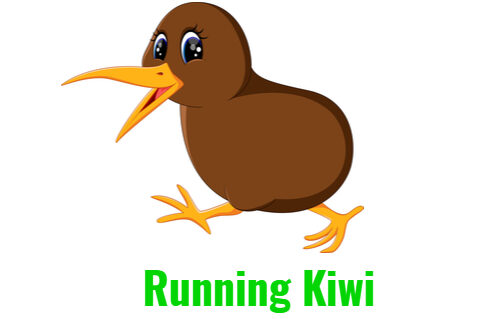Mastering the long run is a crucial aspect of marathon training. The long run is the backbone of any training plan and is essential for building endurance and mental strength. It is during the long run where runners learn to push through physical and mental barriers, and develop the ability to maintain a steady pace for an extended period.
To master the long run, it is important to start with a solid training plan that gradually increases mileage over time. The plan should include a mix of easy runs, tempo runs, and speed work, with the long run being the most important component. It is recommended that runners increase their long run distance by no more than 10% each week to avoid injury and burnout.
In addition to a solid training plan, mastering the long run requires proper nutrition and hydration. Runners should aim to consume a balanced diet with plenty of carbohydrates, protein, and healthy fats to fuel their runs and aid in recovery. Hydration is also crucial, and runners should drink plenty of water and electrolyte-rich fluids before, during, and after their long runs. By following these guidelines, runners can improve their ability to master the long run and achieve their marathon goals.
Understanding the Importance of Long Runs
Long runs are an essential component of marathon training. They provide numerous physiological and mental benefits that help runners prepare for the grueling 26.2-mile distance. In this section, we will explore the importance of long runs in marathon training and the benefits they offer.
Physiological Benefits
One of the primary benefits of long runs is the physiological adaptations they provide. Long runs help build endurance by increasing the body’s ability to utilize oxygen and improve cardiovascular fitness. They also aid in capillary development, which is the blood vessels that deliver nutrients and oxygen to muscles, essentially fueling the run. Additionally, long runs help improve running economy, which is the ability to run at a faster pace while using less energy.
Mental Strength and Endurance
Long runs also provide mental benefits that are just as important as the physiological ones. They help build mental strength and endurance by teaching runners to push through discomfort and fatigue. Long runs build confidence in a runner’s ability to succeed, and they teach patience and pacing. Many runners push too hard on daily runs, but the long run forces them to slow down and pace themselves wisely, just as they must do in the marathon.
In summary, long runs are an essential component of marathon training. They provide numerous physiological and mental benefits that help runners prepare for the 26.2-mile distance. From building endurance and improving cardiovascular fitness to teaching mental strength and pacing, long runs are an integral part of any marathon training plan.
Developing a Marathon Training Plan
When developing a marathon training plan, it is important to consider a few key factors that will help ensure success come race day. These factors include setting your pace, increasing weekly mileage, and incorporating speed work and intervals.
Setting Your Pace
One of the most important aspects of a marathon training plan is setting your pace. It is important to find a pace that is comfortable for you and that you can maintain over the course of the entire marathon. A good rule of thumb is to aim for a pace that is around 1-2 minutes per mile slower than your 10K race pace.
Increasing Weekly Mileage
Another important factor to consider when developing a marathon training plan is increasing your weekly mileage. This should be done gradually over the course of several weeks to avoid injury. A good goal is to increase your weekly mileage by no more than 10% each week.
Incorporating Speed Work and Intervals
Finally, it is important to incorporate speed work and intervals into your marathon training plan. This will help improve your overall speed and endurance, allowing you to maintain a faster pace for longer periods of time. Some examples of speed work and intervals include tempo runs, fartlek runs, and hill repeats.
By taking these factors into account when developing a marathon training plan, you can help ensure that you are adequately prepared for the demands of the race. Remember to always listen to your body and make adjustments to your plan as necessary to avoid injury and achieve your goals.
Nutrition and Hydration Strategies
Marathon training requires proper nutrition and hydration strategies to ensure that the body is fueled and hydrated for the long run. In this section, we will discuss the key components of nutrition and hydration for marathon training, including carb loading and glycogen storage, proper hydration, and fueling during the run.
Carb Loading and Glycogen Storage
Carbohydrates are the primary fuel source for endurance athletes, and carb loading is a popular strategy used to maximize glycogen storage in the muscles and liver. Glycogen is the stored form of glucose, which is used for energy during exercise. Carb loading involves increasing carbohydrate intake in the days leading up to the race, typically 3-4 days before the marathon. This strategy can help to increase glycogen stores and delay the onset of fatigue during the race.
Some good sources of carbohydrates include whole grains, fruits, vegetables, and legumes. It is important to choose complex carbohydrates that are high in fiber and low in sugar to provide sustained energy during the run. Additionally, consuming carbohydrates during the run can help to maintain glycogen levels and delay fatigue.
Proper Hydration
Proper hydration is crucial for marathon training, as dehydration can lead to decreased performance and increased risk of injury. It is recommended to drink 17-20 ounces of water 2-3 hours before the run, and to drink 7-10 ounces of water every 10-20 minutes during the run. It is also important to replace electrolytes lost through sweat, as they are essential for proper muscle function.
Some good sources of electrolytes include sports drinks, coconut water, and bananas. It is important to listen to the body’s thirst cues and drink fluids as needed during the run. Monitoring urine color can also be an indicator of hydration status, with clear or light yellow urine indicating adequate hydration.
Fueling During the Run
Fueling during the run is important to maintain energy levels and prevent fatigue. It is recommended to consume 30-60 grams of carbohydrates per hour of running, depending on individual needs and preferences. Some good sources of carbohydrates include gels, sports drinks, and energy bars.
It is important to practice fueling during training runs to determine what works best for the individual. Additionally, consuming carbohydrates with a small amount of protein can help to delay fatigue and improve recovery.
In summary, proper nutrition and hydration strategies are essential for mastering the long run in marathon training. Carb loading and glycogen storage, proper hydration, and fueling during the run are key components to ensuring that the body is fueled and hydrated for the long haul.
Preventing Injuries and Overtraining
Marathon training is a physically demanding activity that requires careful attention to injury prevention and recovery. Overtraining and injuries can be common problems for runners who push themselves too hard, too fast. Here are some tips to help prevent injuries and overtraining during marathon training.
Understanding Your Body’s Signals
One of the most important things you can do to prevent injuries and overtraining is to pay attention to your body’s signals. If you feel pain, discomfort, or fatigue, it’s important to listen to your body and take a break. Ignoring these signals can lead to more serious injuries and longer recovery times.
Importance of Recovery
Recovery is just as important as training when it comes to preventing injuries and overtraining. It’s important to give your body time to rest and recover after each workout. This includes getting enough sleep, eating a balanced diet, and taking rest days. Foam rolling, stretching, and massage can also be helpful for recovery.
Cross-Training and Strength Training
Cross-training and strength training can also help prevent injuries and overtraining. Cross-training allows you to work different muscle groups and reduce the impact on your joints. Swimming, cycling, and yoga are great cross-training options for runners. Strength training can help improve your running form and reduce the risk of injury. Focus on exercises that target your core, hips, and glutes.
By understanding your body’s signals, prioritizing recovery, and incorporating cross-training and strength training, you can help prevent injuries and overtraining during marathon training. Remember to take it slow and listen to your body to avoid burnout and achieve your marathon goals.
Race Day Preparation
Preparing for race day is essential to ensure a successful marathon. This section will cover the final long run and tapering, setting your marathon pace, and mental and physical readiness.
Final Long Run and Tapering
The final long run is crucial in preparing for a marathon. It should be completed three weeks before the race and should not exceed 20 miles. This run will help build endurance, increase confidence, and ensure that the body is ready for the marathon.
After the final long run, it is essential to taper. Tapering allows the body to rest and recover from the training, ensuring that the runner is fresh and ready for the race. Tapering should begin two to three weeks before the race and involves reducing the mileage and intensity of training.
Setting Your Marathon Pace
Setting the right marathon pace is crucial for first-time marathoners. It is recommended to start slow and gradually increase the pace throughout the race. The pace should be comfortable and conversational, allowing the runner to conserve energy for the later stages of the race.
To determine the appropriate marathon pace, runners can use a pace calculator based on their training times or use a heart rate monitor to ensure they stay within their target heart rate zone.
Mental and Physical Readiness
Mental and physical readiness are essential for a successful marathon. Runners should ensure they get enough sleep, eat a balanced diet, and stay hydrated in the days leading up to the race. They should also have a positive mindset, focusing on their training and preparation rather than worrying about the outcome of the race.
On race day, runners should arrive early, warm up properly, and stay relaxed. They should also have a race plan, including when to take breaks, fuel up, and increase their pace.
In summary, preparing for race day involves completing the final long run, tapering, setting the right marathon pace, and ensuring mental and physical readiness. By following these tips, first-time marathoners can increase their chances of a successful race.
Post-Marathon Recovery Strategies
Recovery after a marathon is a crucial aspect of the training process that should not be neglected. The body undergoes significant stress during the 26.2-mile race, and proper recovery is necessary to avoid injuries and improve future performance. Here are some post-marathon recovery strategies that can help runners recover faster and more effectively.
Nutrition and Hydration Post-Race
Nutrition and hydration play a vital role in post-marathon recovery. Runners should aim to replenish their glycogen stores, repair muscle damage, and rehydrate their bodies after the race. Here are some tips for proper nutrition and hydration post-race:
- Rehydrate with water and electrolyte drinks to replace fluids lost during the race.
- Consume carbohydrates and protein within 30 minutes of finishing the race to replenish glycogen stores and repair muscle damage.
- Eat a balanced diet with plenty of fruits, vegetables, lean protein, and whole grains to support recovery.
- Avoid alcohol and caffeine, which can dehydrate the body and interfere with sleep.
Active Recovery and Rest
Active recovery and rest are equally important for post-marathon recovery. Runners should avoid high-impact activities for a few days after the race and focus on low-impact exercises and rest. Here are some tips for active recovery and rest:
- Take a few days off from running to allow the body to recover.
- Engage in low-impact activities such as walking, swimming, or cycling to promote blood flow and aid in recovery.
- Use foam rollers, massage, or stretching to alleviate soreness and improve flexibility.
- Get plenty of sleep to allow the body to repair and recover.
By following these post-marathon recovery strategies, runners can recover faster and more effectively, reducing the risk of injury and improving future performance.




